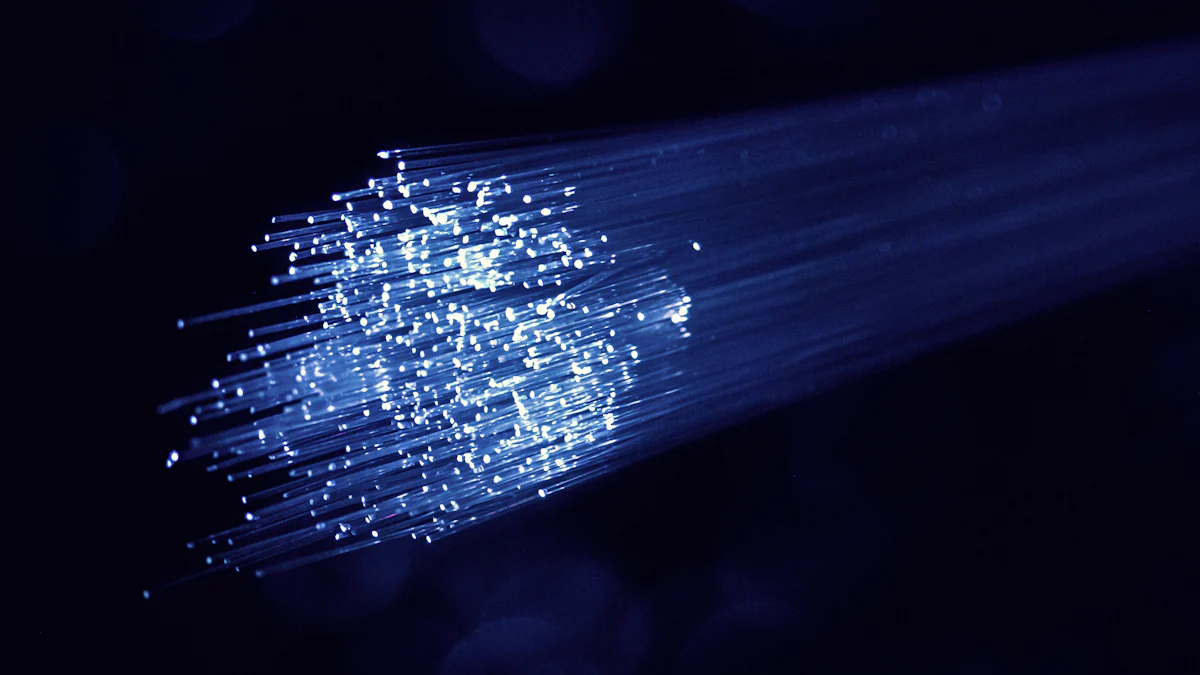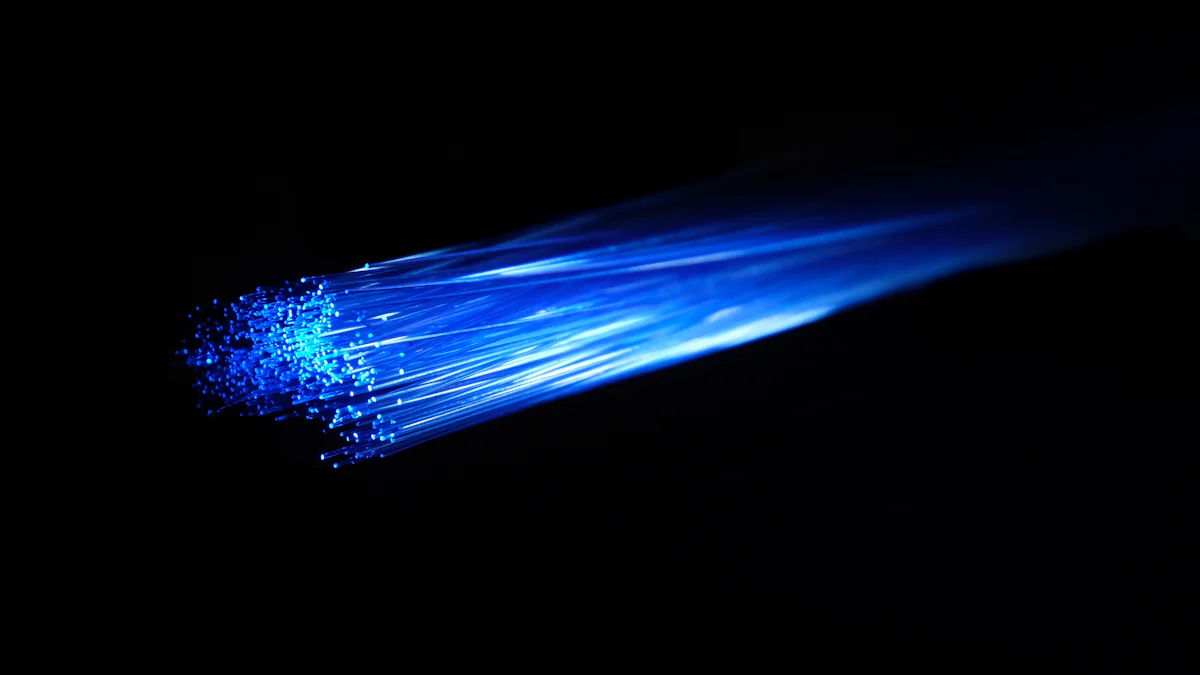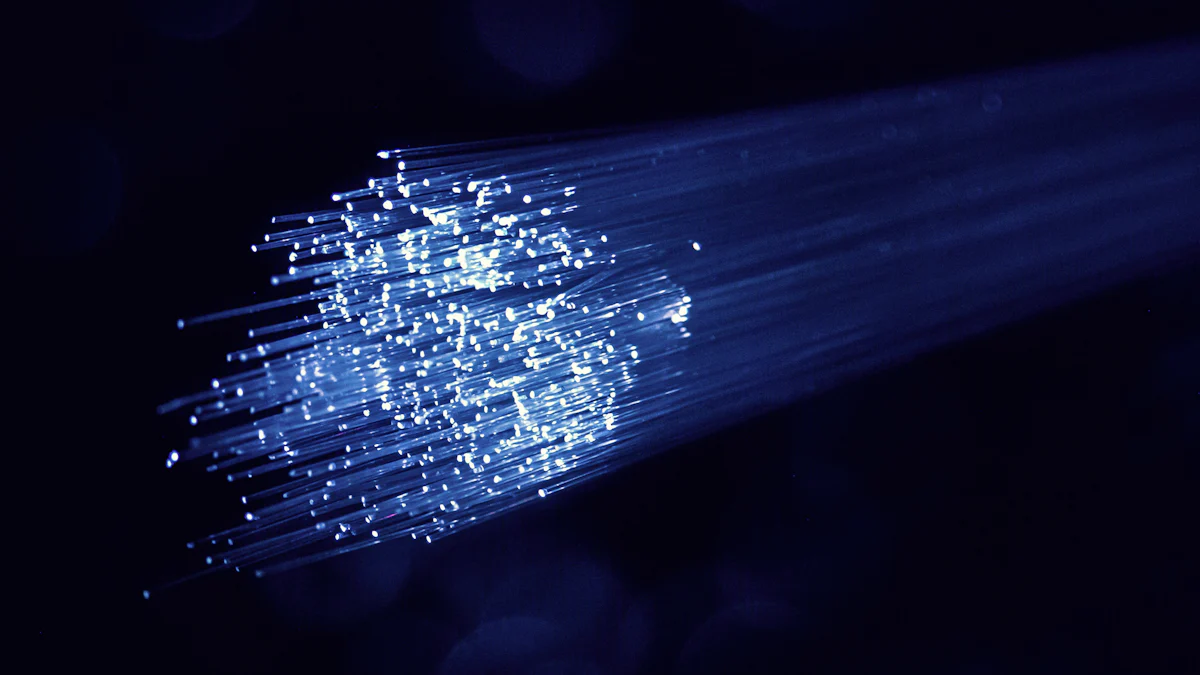Unveiling the Magic of Fiber Optic Bandwidth

Fiber optic bandwidth has revolutionized communication networks with its high-speed data transmission capabilities. The importance of bandwidth in these networks cannot be overstated, driving efficiency and reliability. In this blog, delve into the intricacies of fiber optic bandwidth, exploring its definition, working principles, and crucial role in modern communication systems. Additionally, we will discuss the role of fiber optic transmission, the benefits of using a fiber optic amplifier, and the functionality of a fiber optic coupler in enhancing the overall performance of fiber networks.
Understanding Fiber Optic Bandwidth
What is Fiber Optic Bandwidth?
In the realm of communication networks, Fiber optic bandwidth stands as a pillar of strength, enabling high-speed data transmission capabilities. Unlike traditional copper cables, fiber optics utilize light signals to transmit data swiftly and reliably over extensive distances. This innovative technology harnesses the power of light pulses to carry information, ensuring efficient and rapid communication across networks.
How Fiber Optic Bandwidth Works
The intricate workings of fiber optic bandwidth rely on the principles of light transmission through optical fibers. These transparent strands, often made of glass or plastic, facilitate the transfer of data in the form of light signals. By leveraging this method, fiber optics outshine traditional copper cables in performance and reliability. The utilization of light pulses enables fiber optics to achieve superior data transmission rates and support high-bandwidth demands with ease.
Components of Fiber Optic Systems

Fiber optic transmission plays a pivotal role in the seamless transfer of data within communication networks. This process involves the utilization of optical transmitters and receivers to convert electrical signals into light signals for transmission over fiber optic networks. The optical transmitters are responsible for changing electric signals into light pulses suitable for transmission through fiber optics, employing light sources like LED, LASER diode, or Vertical Cavity Surface Emitting Laser. On the other end, optical receivers detect the transmitted signal after traversing through fiber cables and convert it back into the electrical domain.
When considering fiber optic amplifiers, these components hold significant importance in enhancing the strength and quality of optical signals within the network. They serve the critical function of boosting optical signals without converting them into electrical form, thereby ensuring efficient data transmission over long distances. There are various types of amplifiers available, each designed to cater to specific requirements and signal amplification needs. By selecting the appropriate amplifier type based on network demands, operators can effectively maintain signal integrity and minimize loss during data transfer.
Moving on to fiber optic couplers, these devices serve a distinct purpose in facilitating efficient communication within fiber optic systems. Couplers are utilized to combine or split optical signals as needed for diverse applications. Their primary usage involves directing optical signals from multiple input fibers into a single output fiber or distributing an input signal across multiple output fibers. With different types of couplers available such as fused biconical taper (FBT) couplers and wavelength division multiplexing (WDM) couplers, network operators can customize their setups to meet specific connectivity requirements.
Applications and Benefits
High-Definition Video Streaming
Impact on Streaming Quality
High-definition video streaming, powered by fiber optics, ensures unparalleled clarity and resolution for viewers. The use of fiber optic technology in video streaming guarantees a seamless viewing experience with minimal buffering or interruptions. By transmitting data through light signals, fiber optics maintain the integrity of the video stream, delivering sharp images and vibrant colors to users worldwide.
Bandwidth Requirements
Fiber optics' high bandwidth capabilities are instrumental in meeting the demanding requirements of high-definition video streaming. The substantial data transfer rates supported by fiber optic networks enable the smooth transmission of large video files without compromising quality. With the increasing popularity of 4K and even 8K resolutions, fiber optics play a crucial role in ensuring that viewers receive crystal-clear visuals without delays or degradation in streaming quality.
Cloud Computing
Role in Data Centers
In the realm of cloud computing, fiber optics serve as the backbone for data centers, facilitating rapid and secure information exchange. The use of fiber optic cables within data centers enables swift data transfers between servers and storage systems, enhancing overall operational efficiency. By leveraging fiber optic technology, cloud service providers can ensure seamless connectivity and reliable access to critical data resources for businesses and individuals alike.
Enhancing Cloud Services
Fiber optics revolutionize cloud services by providing high-speed connectivity and robust network infrastructure. The reliability and speed offered by fiber optic networks are paramount in delivering efficient cloud solutions to users across various industries. Whether it's real-time collaboration tools, virtual storage options, or on-demand computing resources, fiber optics play a pivotal role in enhancing the performance and scalability of cloud services for businesses seeking agile and responsive IT solutions.
Real-Time Data Transfer
Importance in Critical Applications
Real-time data transfer is essential for critical applications where immediate access to information can make a significant impact. Fiber optics' ability to transmit data swiftly over long distances ensures that time-sensitive operations run smoothly without delays or latency issues. Industries such as healthcare, finance, and emergency services rely on real-time data transfer enabled by fiber optic technology to make informed decisions quickly and efficiently.
Examples of Use Cases
The versatility of fiber optics extends to various use cases requiring real-time data transfer capabilities. In healthcare settings, telemedicine platforms leverage fiber optic networks to enable remote consultations and diagnostic procedures in real time. Financial institutions utilize fiber optics for high-frequency trading applications that demand instantaneous data transmission for optimal decision-making processes. Additionally, emergency response teams rely on fiber optic communication systems to coordinate rescue efforts effectively during crises or natural disasters.
Future Trends in Fiber Optics

Increasing Bandwidth Demands
The burgeoning need for faster and more robust data transmission capabilities propels the continuous evolution of fiber optics. As industries embrace technologies like cloud computing, 5G networks, and artificial intelligence, the demand for high-speed data transfer escalates exponentially. Innovations such as hollow-core fibers and photonic crystal fibers are at the forefront of addressing these escalating bandwidth demands. Hollow-core fibers, for instance, mitigate signal loss and dispersion, ensuring efficient data transmission over extended distances. Similarly, photonic crystal fibers introduce novel light transmission properties that enhance the overall performance of fiber optic systems.
Technological Advancements
Innovations in Fiber Optic Technology
Cutting-edge advancements in fiber optic technology pave the way for enhanced system efficiency and functionality. Multicore fibers and space-division multiplexing represent groundbreaking innovations aimed at further amplifying data transmission capacities. By integrating multiple cores within a single fiber strand, multicore fibers significantly boost data throughput rates, catering to the escalating connectivity needs of modern communication networks. Space-division multiplexing, on the other hand, optimizes spectral efficiency by transmitting multiple signals through spatially separated paths within a single optical fiber.
Potential Future Developments
The future landscape of fiber optics holds promise for revolutionary developments that will redefine communication networks' capabilities. Ongoing research and development endeavors focus on refining materials and manufacturing processes to make fiber optic solutions more cost-effective and accessible. These advancements not only drive wider adoption but also streamline installation procedures, making fiber optics a more viable choice across diverse applications. The integration of innovative devices for optical signal processing further enhances the adaptability and versatility of fiber optic systems in meeting evolving technological demands.
By embracing these future trends and technological advancements in fiber optics, industries can harness the power of high-speed data transfer to propel innovation and drive unprecedented growth across various sectors.
Fiber optics form the backbone of high-speed telecommunications networks, enabling the transmission of vast amounts of data over long distances with minimal signal loss.
Fiber optic internet offers the speed, reliability, and security needed for businesses to run smoothly, enhancing productivity and competitiveness in the business environment.
Fiber optics provide the necessary infrastructure to meet the escalating connectivity demands of enterprises, allowing businesses to enhance productivity, streamline operations, and make data-driven decisions.
Fast and reliable internet infrastructure is essential for economic prosperity, making fiber optic cables an excellent choice for high-speed data transmission.
See Also
Maximizing Indoor Connectivity with Visible Fiber Cables in FTTR
Becoming Proficient in Fiber Optic Communication with Nylon Cables in FTTR
Current Developments in 24 Cores Fiber Optic Patch Cable Usage in Telecom
Improving Indoor Connectivity using Concealed Fiber Cables in FTTR


